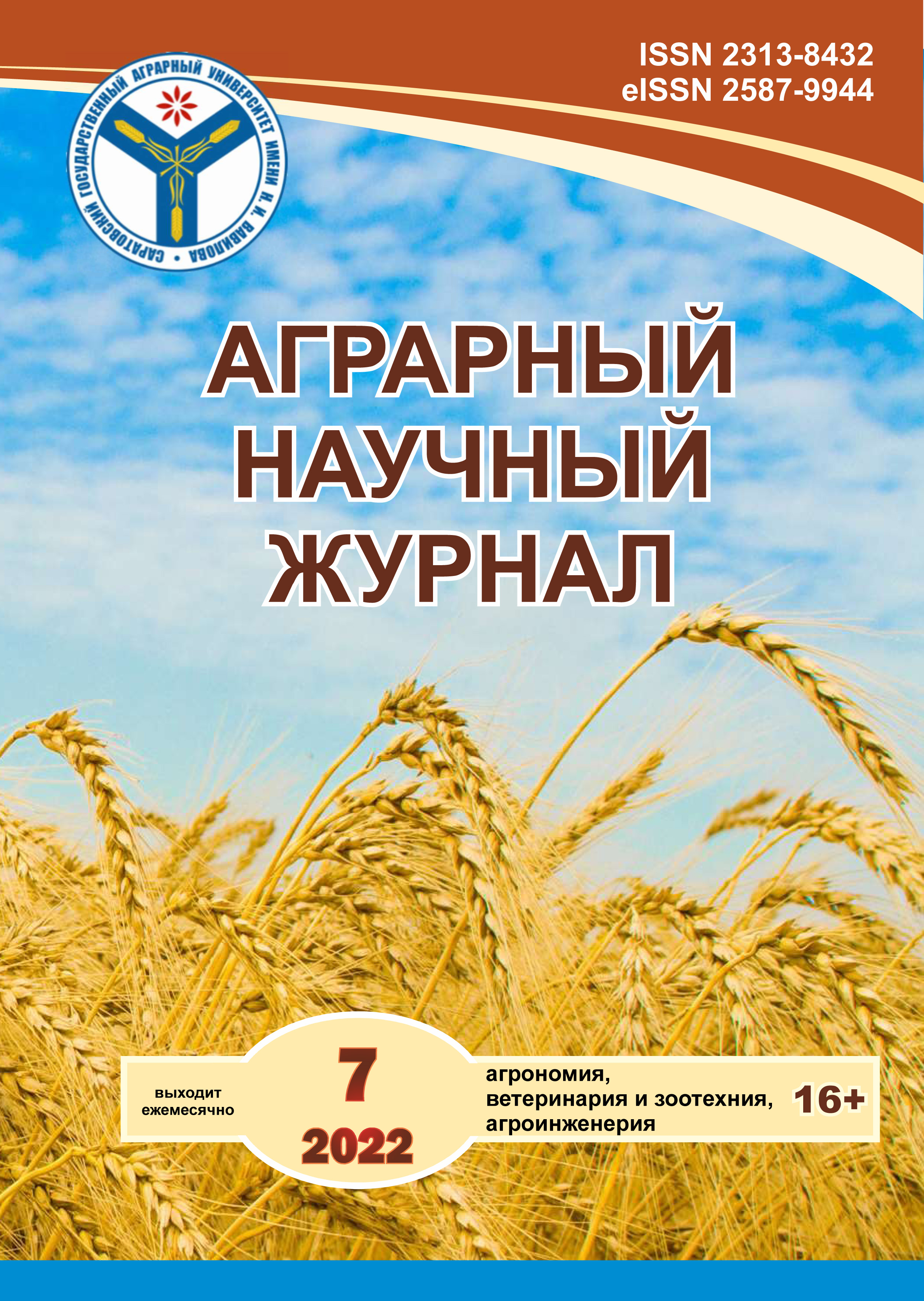Productivity and quality of new varieties of potatoes of Russian selection in different growing conditions
DOI:
https://doi.org/10.28983/asj.y2022i7pp51-55Keywords:
variety, ripeness group, adaptability, productivity, yield level, tubers quality indicatorsAbstract
A comparative assessment of 45 potato varieties, including 41 new varieties of Russian selection, has been carried out. The purpose of the research is a comparative assessment of new potato varieties and selection best of them according to a set of economically valuable traits (adaptability, productivity, quality indicators of tubers and other parameters) in specific soil and climatic conditions. It was found that the highest plant productivity in the experiment was in the relatively favorable growing seasons of 2019 - 2020. Productivity of mid-early and mid-ripe varieties groups was in average 823 and 817 g/bush. Best varieties of the mid-early group: Debut (1488), Varyag (1108), Krasa Meshchery (943), Nevsky and Krasavchik (920 - 915); of the mid-ripe group: Grand (1070), Barin (1030), Kumach and Plamia (995 and 985) g/bush. Average mass of tubers per bush of early maturing and mid-late varieties was 758 and 621 g. From the group of early varieties most productive were Udacha (983), Korchma and Terra (785 and 783); from the group of mid-late - Smak (735) g/bush. In the extreme conditions of 2021, the highest plant productivity was received in the varieties of the early and mid-early groups - 492 and 442 g/bush. This is 266 and 381 g/bush, or 54.1 and 86.2% below the average values for the groups for 2019-2020. The most adaptive to growing conditions from the early varieties were Udacha and Red Scarlett - 580 and 545; from the mid-early - Zumba, Nevsky, Dachnitsa, Sadon (640-585) g/bush. The mass of tubers of mid-season varieties in average was 418, which is 399 g/bush or 95.5% lower than in 2019-2020. The varieties Plamya and Kumach had the highest mass of tubers per bush - 635 and 595 g respectively. The studied varieties were grouped according to their yield levels and tubers quality indicators.
Downloads
References
Импорт картофеля в России / Б. В. Анисимов [и др.] // Картофель и овощи. 2015. № 5. С. 20–22.
Дергачева Н. В. Оценка пластичности сортов картофеля в условиях лесостепной зоны Западной Сибири // Картофель: селекция, семеноводство, технология: сб. науч. тр.; ГНУ ЮжУралНИИПОК, Челябинск, 2012. Т.14 С.141–146.
Доспехов Б. А. Методика полевого опыта (с основами статистической обработки результатов исследований). 5 изд., доп. и перераб. М.: Агропромиздат, 1985. 336 с.
Методика проведения агротехнических опытов, учетов, наблюдений и анализов на картофеле / С. В. Жевора [и др.]. М.: ФГБНУ ВНИИКХ, 2019. 120 с.
Методические положения по оценке сортов и гибридов картофеля на испытательных участках / Е. В. Журавлева [и др.]. М.: ФГБНУ ВНИИКХ, 2017. 20 с.
Жученко А. А. Пути всесторонней интенсификации растениеводства // Будущее науки: международный ежегодник. М.: Знание, 1984. Вып.17. С. 168–176.
Кирюхин В. П. Методика физиолого-биохимических исследований картофеля. М.: НИИКХ, 1989. 142 с.
Экологическое испытание сортов картофеля в условиях Рязанской области / А. И. Марков [и др.] // Вестник РГАТУ. 2012. № 1(13). С. 18–20.
Урожайность сортов картофеля российской и белорусской селекции в различных агроэкологических зонах / А. Э. Шабанов [и др.] // Картофель и овощи. 2016. № 7. С. 25–27.
Сравнительная оценка продуктивности и показателей качества сортов картофеля российской и зарубежной селекции / А. Э. Шабанов [и др.] // Сб. науч. тр. М, 2016. С. 117–125.
Downloads
Published
Issue
Section
License
Copyright (c) 2022 The Agrarian Scientific Journal

This work is licensed under a Creative Commons Attribution-NonCommercial 4.0 International License.








